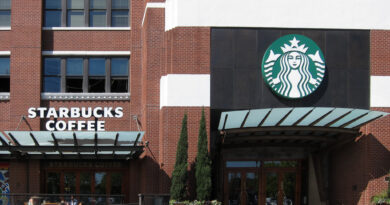The Lovers’ Lane Murders of Cheryl Henry and Andy Atkinson in Houston Texas
On August 23, 1990, the city of Houston awoke to news that would echo for decades. Two young people, Cheryl Henry and Andy Atkinson, had left for what should have been a carefree night out. By the following day, both were found brutally murdered in a secluded area in west Houston known locally as Lovers Lane. Their deaths became one of the city’s most haunting unsolved cases, remembered simply as the Lovers Lane murders. Wikipedia+1
The story of Cheryl and Andy is not only a crime tale, but also a portrait of two promising lives cut short. It is about a summer evening that turned from music and laughter into terror, and about a community that continues to search for answers more than thirty years later. The details of the case, the evidence that remains, and the questions that still linger combine to form a mystery that refuses to fade from public memory. Wikipedia+1
Young Lives With Bright Futures
Cheryl Henry was in her early twenties, known among friends and family as warm, outgoing, and full of energy. She was close to her sister and her parents, and like many young adults in Houston at that time, she enjoyed the city’s nightlife, live music, and time with friends. Andy Atkinson, also in his early twenties, shared that same youthful spirit. Friends described him as friendly, good humored, and easy to be around. Crime Junkie Podcast+1
During the summer of 1990, Cheryl and Andy had only recently begun dating. It was the start of a relationship that felt fresh and exciting, full of that feeling that the future is wide open. They were part of a generation coming of age in a booming city, working, studying, and trying to build their adult lives. Their families could not have imagined that this new romance would end almost as soon as it began, and in a way that would leave permanent scars. KHOU+1
The Night Out Before Tragedy
On the evening of August 22, 1990, Cheryl and Andy planned a simple and familiar night. They went to Bayou Mama’s nightclub, a spot where young people gathered to dance, listen to music, and enjoy the late summer night. Witnesses later recalled seeing them there around 10:45 p.m., laughing and socializing, looking like any other young couple enjoying a night out. City of Houston+1
When the night at the club was over, they did not head home right away. At some point, they drove toward a more secluded area in west Houston, an undeveloped business park with a wooded section that locals had turned into a makeshift Lovers Lane. For many couples, it was a place for privacy and quiet away from the lights of the city. For Cheryl and Andy, it would be the last place they were seen alive. Wikipedia+1
The following morning, August 23, 1990, neither Cheryl nor Andy showed up for work. This was unusual enough that their loved ones quickly grew concerned. Family members reported them missing, aware that something was wrong but not yet prepared for the devastating news that was coming. City of Houston+1
Discovery At Lovers Lane
The first critical break came not from family but from a security guard. While making his rounds in an undeveloped business area near the 1300 block of Enclave Parkway in west Houston, a Sysco Foods security guard noticed an abandoned car. The vehicle belonged to Andy Atkinson. The guard contacted authorities, and Houston police responded to the scene. City of Houston
Officers began a search of the surrounding wooded area. There they found a scene that would shock even seasoned investigators. Cheryl Henry’s nude body was discovered first, hidden in the brush. Not far away, they found Andy Atkinson. Both had been killed in a brutal attack. Cheryl showed signs of sexual assault, and her throat had been cut. Andy had been tied to a tree and suffered severe wounds to his neck. Wikipedia+2KHOU+2
The remote location, the way the bodies had been left, and the violence inflicted suggested a calculated and sadistic attacker. This was not a crime of simple robbery or a random confrontation that escalated suddenly. The crime scene indicated control, restraint, and a deliberate effort to inflict terror and harm. From the very first hours, detectives understood that they were searching for someone extremely dangerous. Wikipedia+1
Early Investigation And Emerging Clues
The Houston Police Department launched an intensive investigation. Detectives canvassed the nightclub where Cheryl and Andy had spent the earlier part of the evening. They interviewed friends, staff, and patrons who had seen the young couple leave. They looked into their backgrounds, searching for anyone who might have held a grudge or had a reason to harm them. There were no obvious enemies, no known threats, and no criminal involvement that could explain the attack. Crime Junkie Podcast+1
Physical evidence, however, did offer some hope. Forensic examiners collected biological samples from Cheryl’s body that contained the attacker’s DNA. In 1990, DNA analysis was still developing as a law enforcement tool, but investigators recognized immediately how important this evidence could become in the future. They preserved it carefully, entering a profile into national databases once the technology matured enough to allow it. Wikipedia+1
For years, detectives compared suspects to the DNA profile and chased down tips. At different times, they examined possible links to other violent crimes and questioned individuals who fit the general description of a possible attacker in the Lovers Lane area. Every promising lead seemed to end in a dead end. The case remained open, but no one was arrested. KHOU+1
The DNA Match That Raised New Questions
A major development came in August 2001. More than a decade after the murders, DNA from a separate sexual assault case produced a match to the unknown offender’s profile from the Cheryl Henry rape evidence. This meant the same unidentified man had assaulted another woman and left the same genetic signature behind. That surviving victim worked with a sketch artist to produce a composite image of the suspect. City of Houston+1
This breakthrough confirmed that Cheryl and Andy’s killer was almost certainly a repeat offender, not someone who committed a single isolated crime. The hope was that the composite sketch and renewed publicity would prompt someone who recognized the face to come forward. However, even with this powerful new clue, the attacker remained unidentified. The DNA tied the crimes together but did not tie them to a name. Solve the Case+1
In the years that followed, advancements in DNA technology and forensic genealogy changed what was possible in cold case investigations. Across the country, previously unsolved homicides were being cracked as investigators used distant family matches and genealogical trees to narrow down suspects. For the Henry and Atkinson case, the existence of a strong DNA profile kept hope alive that their killer might also be identified one day through similar methods. Solve the Case+1
Families And A Community In Mourning
From the beginning, the emotional weight of the case rested heavily on Cheryl and Andy’s families. Parents and siblings remembered not only the horror of the crime but also the joyful, everyday moments that defined their loved ones. They spoke publicly about their grief, about birthdays and holidays that would never be the same, and about the pain of living so many years without answers. ABC13 Houston+1
For the Houston community, the Lovers Lane murders became a symbol of vulnerability. The idea that a young couple could leave a popular nightclub and, within hours, be subjected to such cruelty in a relatively quiet part of town was deeply unsettling. People questioned whether the killer might have been someone who had stalked Lovers Lane spots regularly, looking for victims, or someone familiar with that particular area. It changed the way many residents thought about secluded hangouts and the safety of the city at night. KHOU+1
Over time, the case also became a fixture in true crime media. New articles, television features, and podcasts revisited Cheryl and Andy’s story, often interviewing family members and investigators. Each retelling renewed public interest and served as another call for information, another chance that someone’s memory or conscience might finally break the silence. ABC13 Houston+2Crime Junkie Podcast+2
Ongoing Efforts To Find The Killer
Even decades later, the Houston Police Department’s Cold Case Squad continues to list the Lovers Lane murders as an active investigation. The official case summary notes the abandoned car near Enclave Parkway, the discovery of Cheryl and Andy’s bodies in the wooded area, and the crucial DNA match in 2001 that links their murders to another sexual assault. The department still asks anyone with knowledge of the crime or the suspect to contact investigators or Crime Stoppers. City of Houston+1
Modern coverage has highlighted how technology keeps reshaping the possibilities. New methods of analyzing old evidence, more sensitive testing, and the potential of forensic genealogy mean that cases once thought impossible to solve now have a path forward. Each advancement raises fresh hope that the unknown profile tied to Cheryl and Andy’s murders can eventually be matched to a real identity. KHOU+2Solve the Case+2
True crime documentaries and podcasts have also become partners in the search for answers. Programs focusing on Texas cold cases or unsolved lovers lane homicides dedicate entire episodes to Cheryl and Andy, often including tip line information at the end. These stories reach audiences far beyond Houston, increasing the chances that someone, somewhere, might recognize the details or the composite sketch and finally step forward. ABC13 Houston+2Crime Junkie Podcast+2
An Unfinished Story
The murder of Cheryl Henry and Andy Atkinson on August 23, 1990, remains an unfinished story. Two young lives were taken in a matter of hours, and the person responsible has never been publicly identified or brought into a courtroom to face judgment. What is left are memories, case files, preserved evidence, and a DNA profile that proves the killer was real and left his trace behind. Wikipedia+2Solve the Case+2
For their families, justice means more than a name on paper. It means understanding who committed the crime and why, hearing the truth about what happened in those final hours on Lovers Lane, and seeing accountability after so many years of waiting. For Houston, solving the Lovers Lane murders would mark the end of one of its most enduring cold cases and send a message that even decades old crimes are not forgotten. ABC13 Houston+1
Until that day comes, the story of Cheryl Henry and Andy Atkinson continues to be told. Each retelling keeps their memory alive and keeps pressure on the unknown killer, wherever he may be, and on the silence that has protected him. The case stands as a reminder that time does not erase the need for justice, and that a city can continue to care, year after year, about two young people who never made it home from a summer night out in Houston.
Discover more from City Towner
Subscribe to get the latest posts sent to your email.



